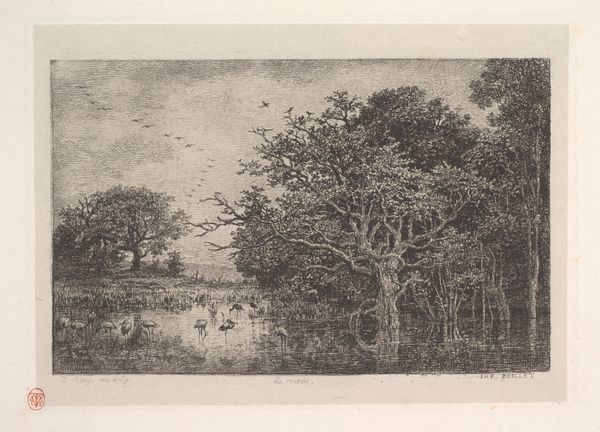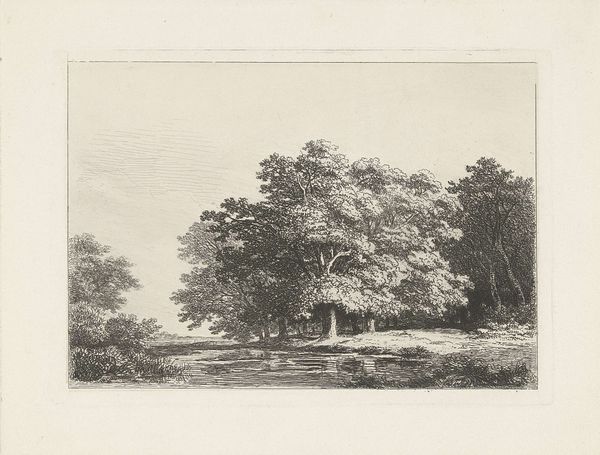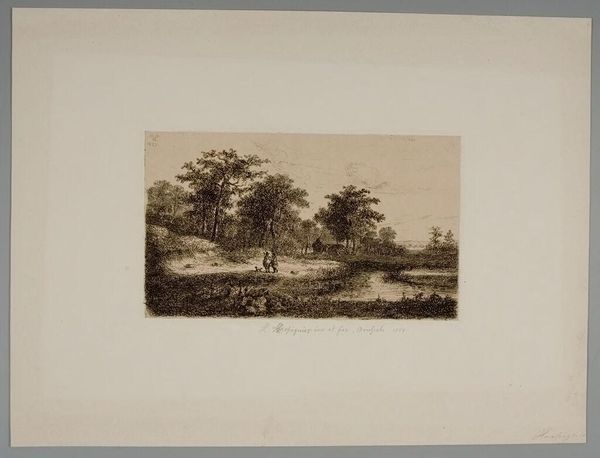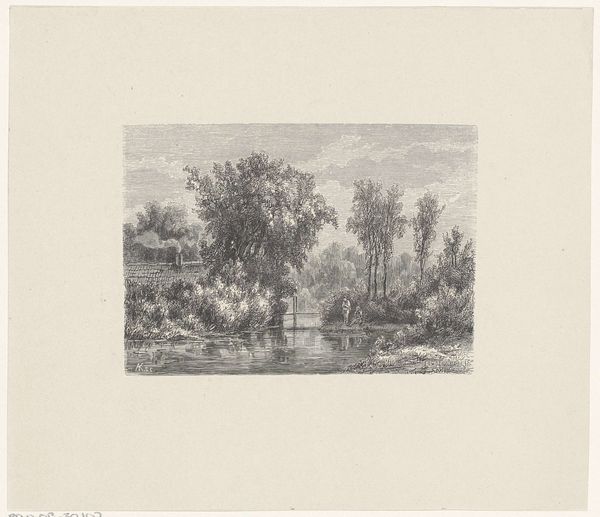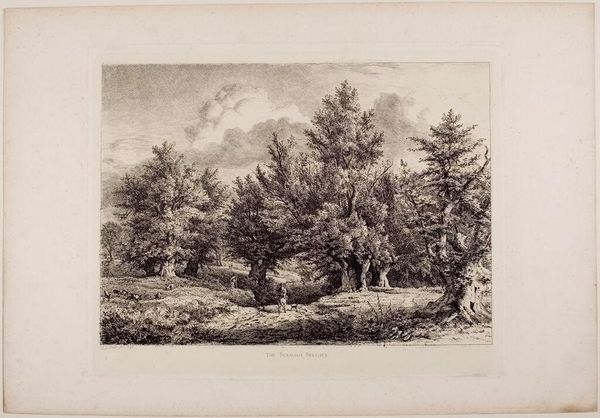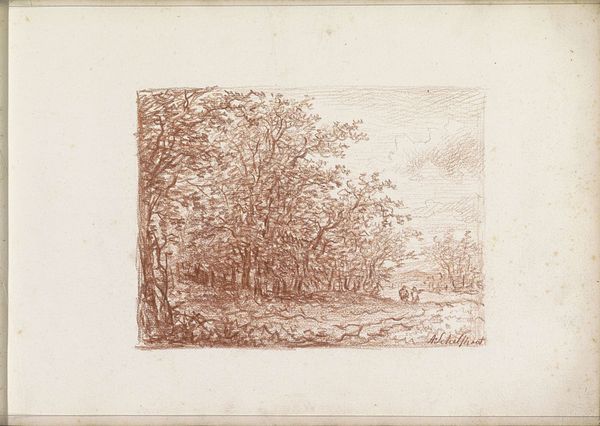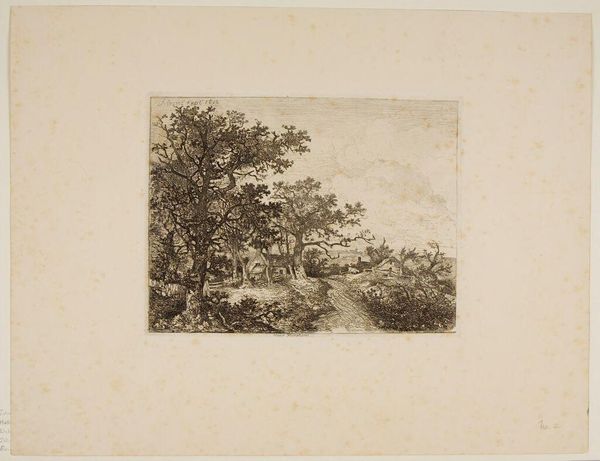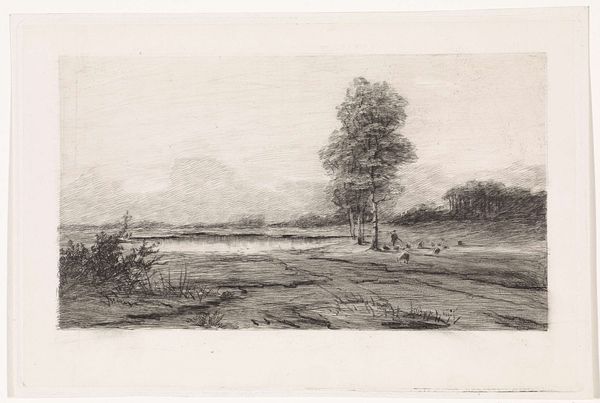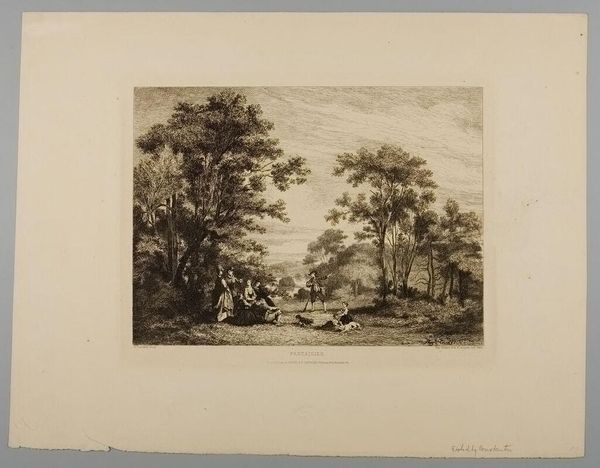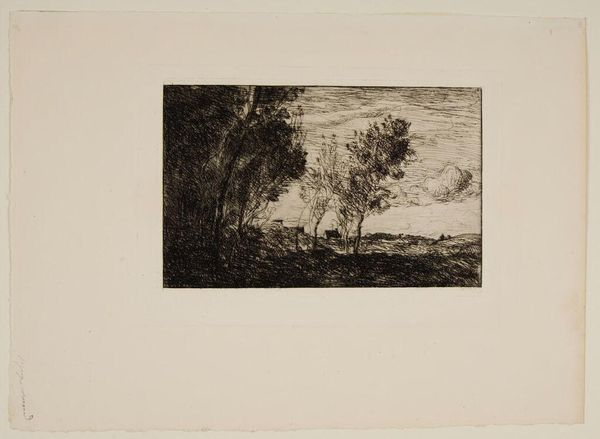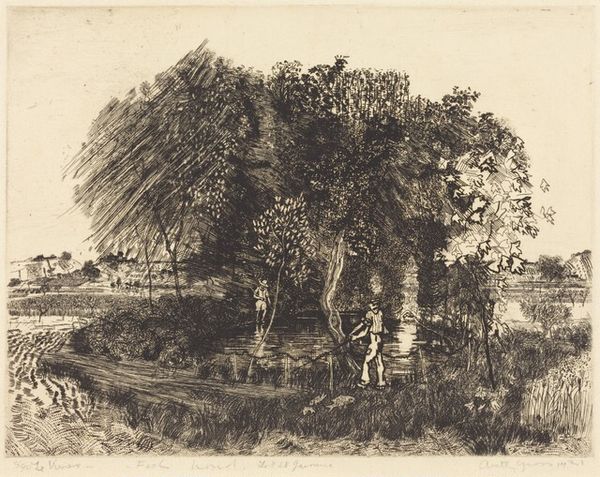
Copyright: CC0 1.0
Curator: Welcome. Here we have Charles François Daubigny's "The Storks in the Marsh," residing in the Harvard Art Museums. Editor: Immediately, I notice the somber mood, almost elegiac. The tonal range is so restricted, lending it a dreamlike quality. Curator: Daubigny, a precursor to Impressionism, was quite interested in the landscape and the common life. The marsh, typically viewed as unproductive, is here given aesthetic weight. Editor: Absolutely. Note how the intricate network of lines coalesces to form these shapes. The composition is cleverly balanced, despite the apparent chaos. Curator: Indeed. The storks themselves are emblematic, perhaps symbolic of fertility or renewal, depending on your socio-historical lens. Editor: I'm captivated by the interplay between light and shadow. It gives the impression of a world caught between visibility and obscurity. Curator: Daubigny was deeply committed to depicting scenes accessible to the average viewer. The marsh, in this context, becomes a democratic landscape. Editor: It's a wonderful study in contrasts, isn't it? Formally rigorous yet emotionally resonant. Curator: Yes, a testament to the quiet beauty found in the everyday. Editor: A contemplative piece that invites us to delve into the liminal spaces of both nature and representation.
Comments
No comments
Be the first to comment and join the conversation on the ultimate creative platform.
